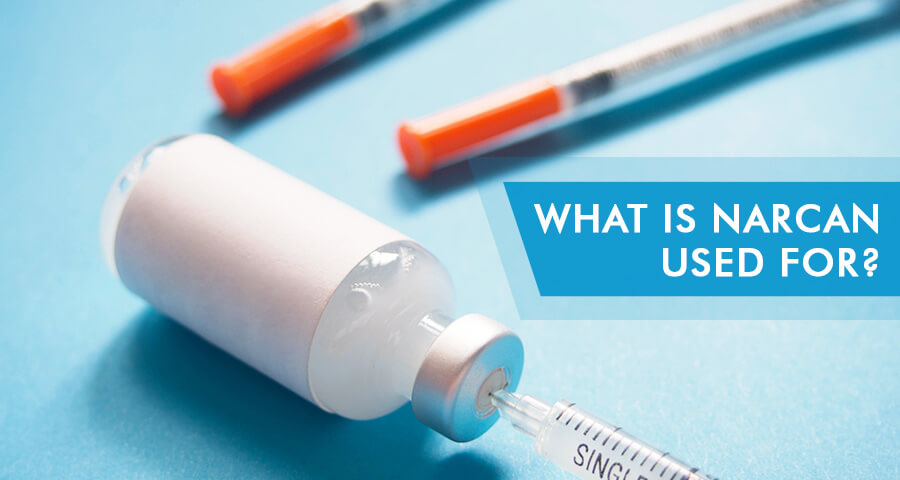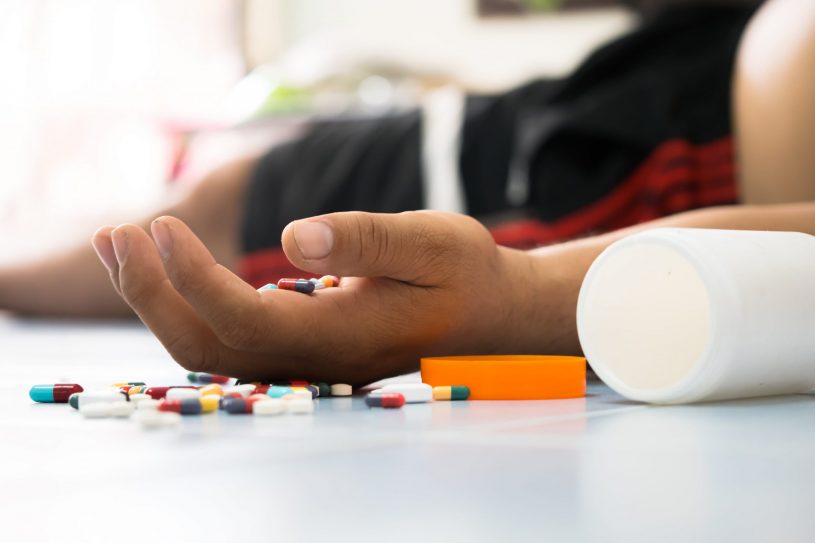What is Naloxone Used for? Narcan Uses and Contraindications

Naloxone is used for the treatment/reversal of opioid overdose. The nature of this medical emergency drug is so crucial that it can be life-saving in many circumstances. In the United States, over 47,600 people died of opioid overdose in 2017, and there is the likelihood that some of these cases could have been avoided with the administration of Naloxone.
Table Of Contents:
On that note, this text seeks to explain how the drug works and the Narcan drug contraindications to be wary of. Methods of administration (such as nasal spray) are also discussed. Awareness about the symptoms of opioid overdose and how to manage it should help to improve the situation.

When to Use Narcan
It is important to be careful when administering this medication in any situation to avoid potentially life-threatening errors. One must be knowledgeable enough about the drug to know if there is a genuine need for any Narcan uses. On that note, there is a single-use case for Naloxone, which is when a person shows symptoms of an overdose on opioids.
This is a medication meant to help reverse the effects of taking too many opiates, especially as they impact the respiratory system. The classification is opiate antagonist, which means it prevents euphoric feelings and can counteract other effects of opiates, although one can still experience withdrawal effects.
Considering the efficacy of Naloxone in the reversal of opioid overdose effects, there is a tendency for assumptions that the drug can also help reverse these effects for other drugs too. However, this is not the case.
Naloxone use is ineffective for alcohol poisoning or any other substance different from opiates. This includes drugs such as benzodiazepines and psychostimulants such as cocaine and amphetamines.
Narcan for Opioid Overdose
As stated previously, the primary function is for the reversal of opioid overdose effects. The drug is given in cases where the person has started to show symptoms of overdose on opioids, or when it is suspected. However, due to this reversal, one may experience withdrawal effects that will also need to be managed.
Information about off-label uses show that the medication can help with the treatment of opioid-induced pruritus (itching) and also in the prevention of urinary retention in post-operative patients.
What Drugs Can Narcan Reverse?
The fact that it is primarily for the reversal of opioid overdose effects and does not stop withdrawal effects has been established, but which exact drugs/substances does this “blanket” term cover? The list below contains these:
- OxyContin
- Vicodin
- Codeine
- Dilaudid
- Demerol
- Lorcet
- Lortab
- Norco
- Heroin
- Fentanyl
- Methadone
- Morphine
- Oxycodone
- Hydrocodone
- Hydromorphone
- Buprenorphine
It should be noted that the list of drugs above is not exhaustive and in fact, Narcan may still be effective in the reversal of overdose effects in other substances that consist of opium.
Can Narcan Work On Cocaine?
Cocaine is not an opioid; it is a stimulant, while opioids are depressants. As such, Narcan for cocaine overdose is not effective. It is possible that if an overdose is being caused by combining cocaine with opioids, the medication could reverse part of the OD effects, giving the person time to get to a hospital and be treated, but it will not impact the effects of cocaine on the body.
Can Narcan Work On Fentanyl?
Fentanyl is an opioid and a very powerful and dangerous one at that. Narcan does reverse fentanyl OD in some cases, specifically cases where the drug can be given very quickly after the symptoms of fentanyl overdose begin to show. It is important to know how to administer Naloxone quickly in these cases because the drug works by rapidly binding to opioid receptors and blocking the effects of fentanyl.
There is a common misconception about Narcan-resistant fentanyl which is false. The fact that fentanyl is stronger than many other opioid drugs means that one might require multiple doses, which can also still be followed by withdrawal symptoms.
One may require up to 2 doses in a fentanyl overdose situation. If despite the multiple-dose, changes are not seen, then it may be a different medical emergency.
Does Narcan Work On Meth?
No, methamphetamine is a stimulant of the amphetamine class. Naloxone is not made for the treatment of meth overdoses because it is not effective. If a meth overdose is caused by combining meth with an opiate, The medication may help a bit to curb the overdose but will not address the effects that meth produces.
This means that, even if Naloxone appears to make a difference in these meths + opioid overdose cases, there will still be a need to take the appropriate medication/treatment for the symptoms caused by meth itself.
How To Administer Naloxone
Directions for how to use naloxone vary according to the specific method of administration. There are three ways for how to administer Naloxone, including:
- Intranasal spray administration (spraying into the nasal cavity)
- Auto-Intramuscular administration (auto-injecting a pre-filled, ready-to-use dose by pressing the medicine against a person’s upper leg)
- Manual intramuscular administration (injecting the medication via a needle in a syringe)
The listed methods of administration further have dosage instructions for users to follow, including the nasal spray. These dosages are fairly standard but may vary in certain contexts – for instance, in situations where the opioid is a stronger variant (fentanyl). Dosage information and considerations are discussed below:
Continuous IV infusion (Off-label)
It is used in patients exposed to long-acting opioids (e.g., methadone), sustained-release products. Calculate dose/hr. based on the effective intermittent dose used and duration of adequate response seen. Alternatively, use two-thirds of the initial effective bolus on an hourly basis (0.25-6.25 mg/hr); administer one-half of the initial bolus dose 15 min after initiating continuous IV infusion to prevent a drop in drug levels
Inhalation via Nebulization (Off-label)
It is used 2 mg as inhalation into the nasal cavity via nebulization; may repeat. Switch to IV or IM administration when possible. Nebulization method is not included in the AHA recommendations for initial management of opioid overdose
Evzio Auto-Injector
Indicated for immediate administration as medical emergency treatment of known or suspected opioid overdose, as manifested by respiratory symptoms and/or central nervous system depression. 0.4 mg or 2 mg IM/SC into the anterolateral aspect of the thigh (through clothing if necessary). Seek emergency medical care immediately after use. Additional doses may be given q2-3 min until EMS arrives
Dosing considerations (Evzio)
Take-home, single-use auto-injector with visual and voice instruction for guidance. Prescription can be given to a family member or caregiver. Compact size for portability with retractable needle system. Intended for immediate administration as medical emergency therapy in settings where opioids may be present. This prescription is not a substitute for emergency medical care
Reversal of Respiratory Depression with Therapeutic Opioid Doses
0.04-0.4 mg IV/IM/SC initial prescription; may repeat until desired response achieved; if desired response not observed after 0.8 mg total, consider other causes of respiratory depression
It is important that anyone who abuses opiates or is around those who do knows about these three methods of administration. While there are other ways it can be used, including intravenously, these methods are only meant for hospital settings.
Considering when to administer, it should be as soon as possible after overdosing symptoms are observed, to avoid escalation of the threat to life. First, the user or those around them should call 911; then they should opt for Narcan use. If the person has stopped breathing, Cardiopulmonary resuscitation (CPR) may be needed to restart the respiratory system while the medication does its work. As soon as Emergency Medical Technicians (EMTs) arrive, there should be enough space provided for them to work on the patient.
How long Naloxone lasts depends on how it was taken. If used intramuscularly or intranasally, the naloxone duration of action is about 90 minutes. This is equal to roughly how long naloxone blocks opioid receptors.
Naloxone is a widely tested and well-trusted medication and as such, the drug has been approved by the United States Food and Drug Administration for use in the treatment and management of opioid overdose.

What Is Narcan Training?
This training includes classes with kits and online videos that aim to teach people how to administer Narcan safely and correctly. With these classes and kits, users learn how to identify when someone needs naloxone administered, a proper injectable dose, managing subsequent withdrawal, and how to use all product forms of the drug properly. Users are also told about how to potentially save a life by contacting emergency medical services, and what to tell them when they call.
In most cases, free training is offered. However, there are some paid programs, especially when they offer a kit for the user to keep. There are also websites for training resources available with information about opioid overdose, Naloxone, and how the latter can be used to manage the former.
Anyone worried about themselves or loved ones overdosing on opiates, or even those who just live in an area with heavy abuse should look into a website with resources or other forms of training near them to be prepared for possible emergencies.
Narcan Contraindications
Before taking the medication, people should be aware of Narcan contraindications. It is possible the user stands to face a greater risk by taking the medication than avoiding it.
However, contraindications for Narcan are relatively limited. People with a known hypersensitivity to Naloxone are advised to avoid the drug, along with Infants of narcotic dependent mothers and infants with no respiratory depression or respiratory/CNS depression from a non-narcotic cause.
With this information, it is advised that anyone that falls into any of the three contraindicated categories should look for alternatives – with the consultation and prescription of a qualified doctor.
Is Naloxone Safe To Use?
The approval of the United States Food and Drugs Administration for the nasal spray of naloxone goes to some length to show that this is a safe medicine when used in the right circumstances and in the right manner. Additionally, the availability of training resources and classes in some states gives an extra layer of protection because anyone can learn how to take the drug safely.
If you or a loved one are worried about opioid overdose and seek to know more about the role that Naloxone plays in its treatment, be sure to reach out to a drug rehab facility to get the information or treatment required.
Hope Without Commitment
Find the best treatment options. Call our free and confidential helpline
Most private insurances accepted
Page Sources
- Straseski, J. A., Stolbach, A., & Clarke, W. (2010). Opiate-positive immunoassay screen in a pediatric patient. Clinical chemistry, 56(8), 1220–1223. https://www.ncbi.nlm.nih.gov/pmc/articles/PMC2975969/
- NIDA. 2021, June 1. Fentanyl DrugFacts. Retrieved from https://www.drugabuse.gov/publications/drugfacts/fentanyl
- NIDA. 2021, June 1. Naloxone DrugFacts. Retrieved from https://www.drugabuse.gov/publications/drugfacts/naloxone
- Lauren-Jei McCarthy. 2021. FDA Approves Higher Dosage of Naloxone Nasal Spray to Treat Opioid Overdose. https://www.fda.gov/news-events/press-announcements/fda-approves-higher-dosage-naloxone-nasal-spray-treat-opioid-overdose
- Balsara, J. J., Nandal, N. V., Burte, N. P., Jadhav, J. H., & Chandorkar, A. G. (1984). Effects of naloxone on methamphetamine and apomorphine stereotypy and on haloperidol catalepsy in rats. Psychopharmacology, 82(3), 237–240. https://pubmed.ncbi.nlm.nih.gov/6425907/
- NIDA. 2017, March 30. Naloxone for Opioid Overdose: Life-Saving Science. Retrieved from https://www.drugabuse.gov/publications/naloxone-opioid-overdose-life-saving-science

 Authored by
Authored by  Reviewed by
Reviewed by 



